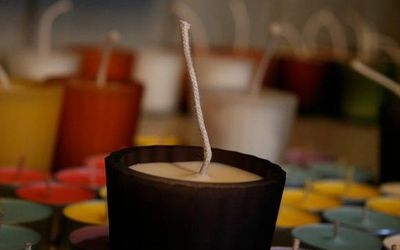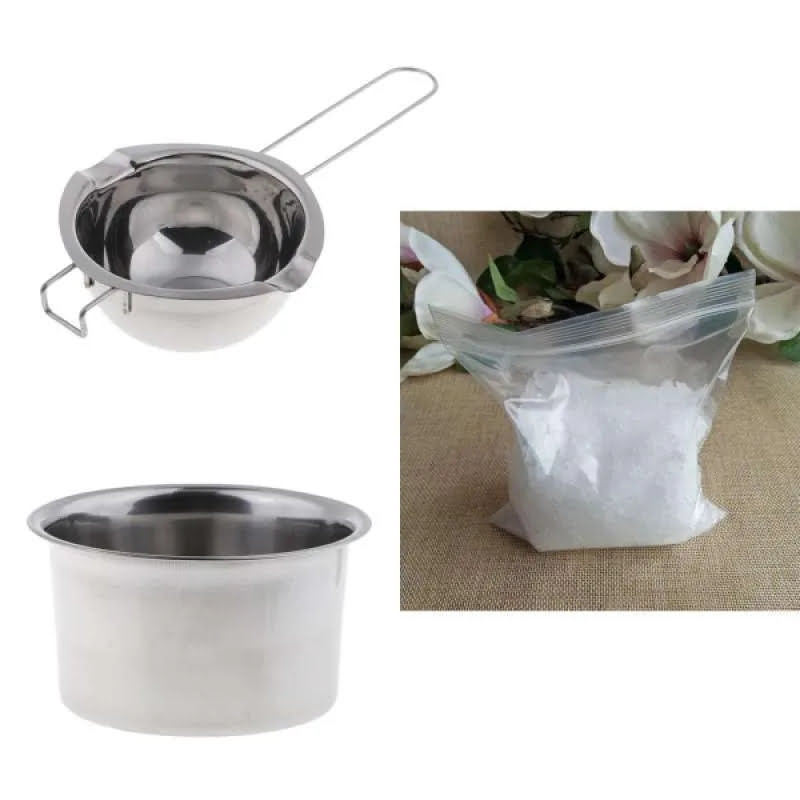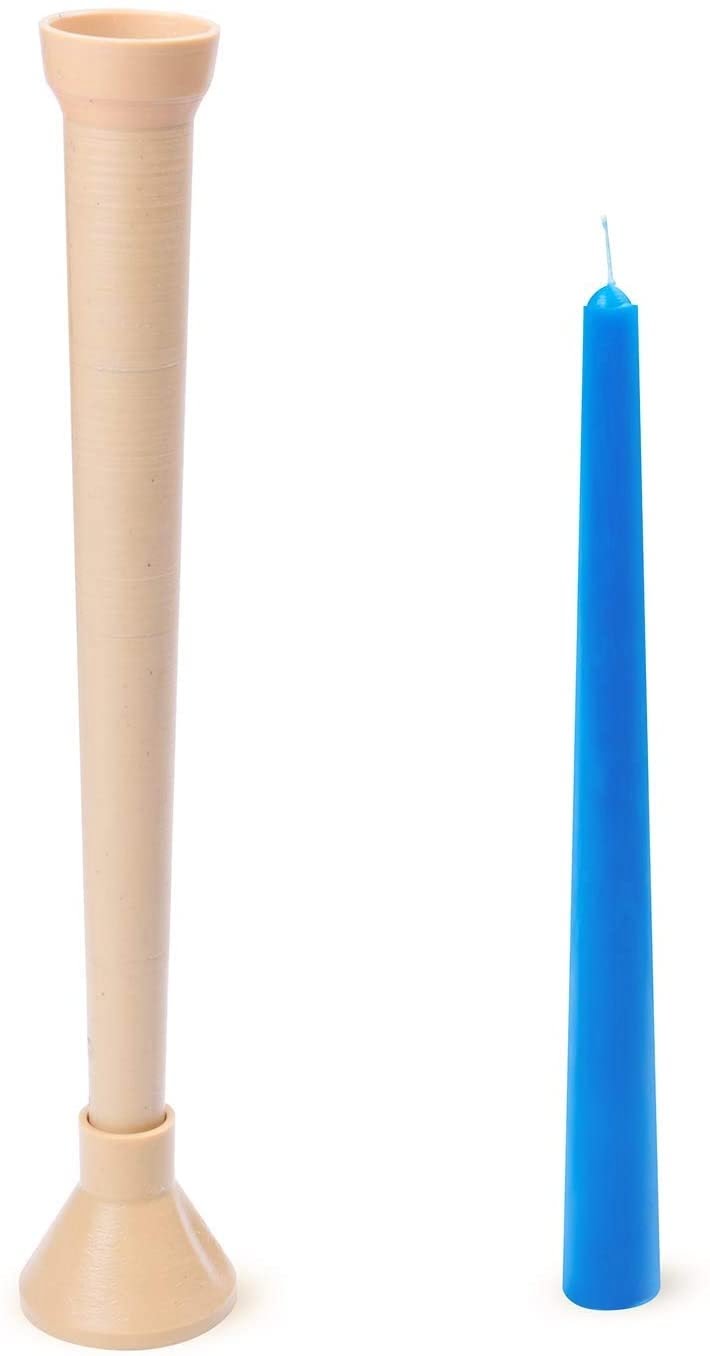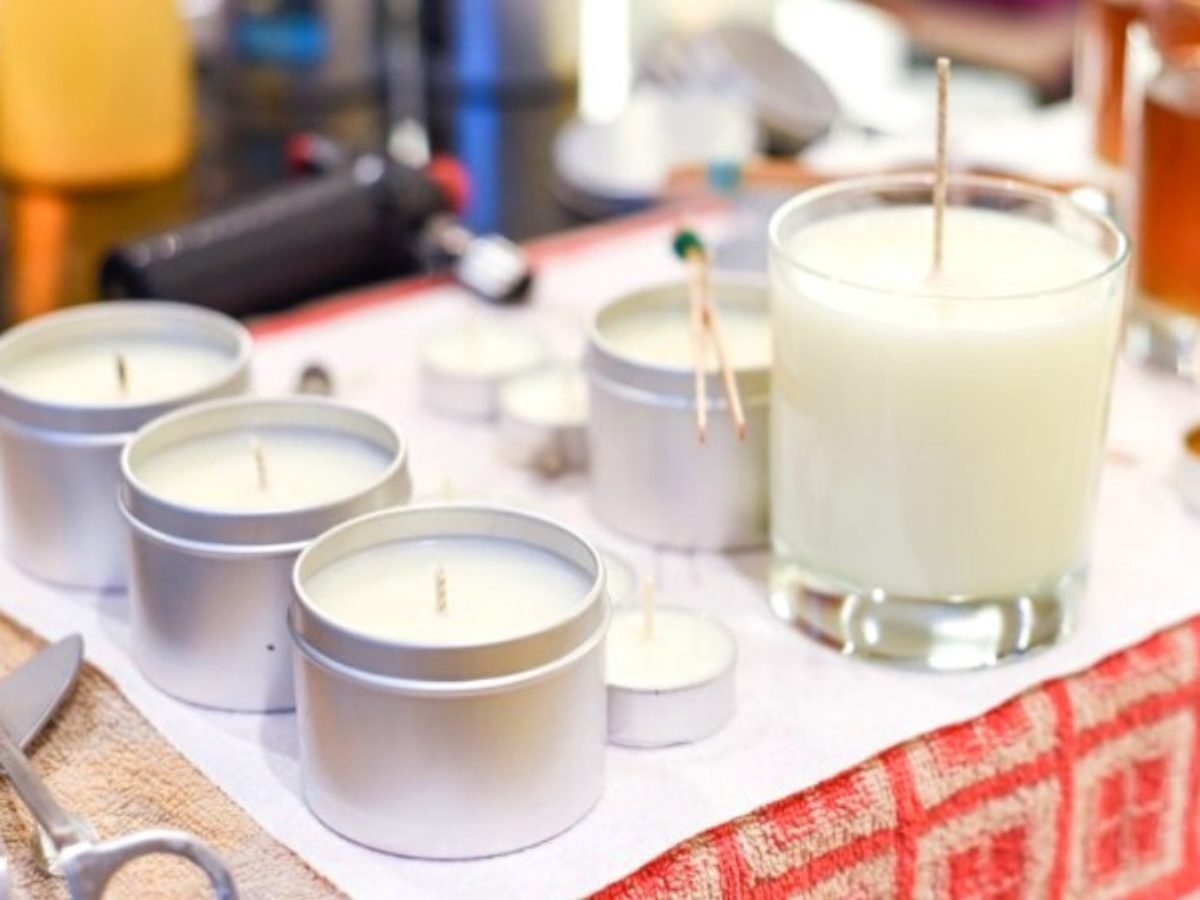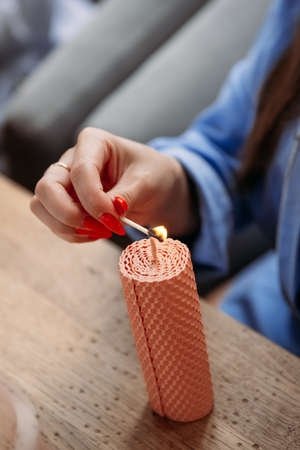When it comes to candle making, one crucial decision that can significantly impact the quality of your candles is selecting the right wick. The choice of wick plays a vital role in determining how efficiently and safely your candle will burn, as well as influencing factors such as scent throw and burn time.
In this article, we will delve into the importance of choosing the appropriate wick for your candle-making endeavors, focusing on which wick to use in candle making.
Selecting the right type of wick – whether it be cotton, wooden, or zinc core – is essential in achieving optimal performance from your candles. Each type of wick brings its own set of benefits and considerations to the table.
Factors such as candle size, wax type, and fragrance load all play a key role in determining which wick will best suit your specific needs. By understanding these factors and how they relate to choosing a wick, you can ensure that your candles burn efficiently and produce the desired results.
In this comprehensive guide, we will not only explore different types of wicks but also delve into important considerations when choosing a wick for your candles. From determining the perfect wick size for various candle sizes to conducting burn tests to assess performance, we will provide you with all the necessary information to make informed decisions in selecting the ideal wick for your candle making projects.
Stay tuned as we unravel the intricacies of choosing the right wick in candle making to enhance both safety and enjoyment in creating your own unique candles.
Types of Candle Wicks
Candle wicks play a crucial role in determining the overall quality of a candle, affecting its burn time, scent throw, and overall performance. When it comes to choosing the right wick for your candle making project, there are several types to consider. The most common types of candle wicks include cotton wicks, wooden wicks, and zinc core wicks, each offering unique characteristics and benefits.
Cotton Wicks
Cotton wicks are one of the most popular choices among candle makers due to their clean burn and minimal soot production. These wicks are made from natural cotton fibers that are braided together to provide a consistent and stable flame. They are suitable for a wide range of wax types and can be used in various candle sizes.
Wooden Wicks
Wooden wicks have gained popularity in recent years for their aesthetic appeal and unique crackling sound when burning. Made from sustainably sourced wood, these wicks offer a slower burn rate compared to cotton wicks, making them ideal for larger candles. Wooden wicks also create a wider melt pool which helps with an even fragrance throw.
Zinc Core Wicks
Zinc core wicks are another option to consider for container candles as they offer rigidity and stability during the burning process. The metal core provides additional support to prevent mushrooming and ensure a consistent burn. While they may not be as eco-friendly as other options, zinc core wicks are known for their reliability in maintaining an even flame throughout the candle’s life.
When deciding on which type of wick to use in your candle making venture, consider factors such as the size of your candle, the type of wax you’re using, and the amount of fragrance load. Experimenting with different wick options through burn tests is essential to determine which one works best for your specific needs and preferences.
Selecting the right wick will not only optimize the performance of your candles but also enhance the overall user experience by providing a clean and efficient burn every time.
Factors to Consider When Choosing a Wick
When it comes to candle making, choosing the right wick is crucial in determining the overall performance of your candles. The type of wick you select can impact factors such as burn time, scent throw, and even the appearance of the finished product. Three main types of wicks commonly used in candle making are cotton wicks, wooden wicks, and zinc core wicks.
Cotton wicks are popular for their clean burn and minimal soot production. They work well with a wide range of wax types and are suitable for smaller candle sizes. Wooden wicks offer a unique crackling sound when lit, adding an extra element to the candle experience.
These wicks are best suited for larger container candles due to their wider size. Zinc core wicks are known for their rigidity and ability to remain straight during burning, making them ideal for pillar candles.
When selecting a wick for your candles, consider factors such as candle size, wax type, and fragrance load. Larger candles may require thicker or multiple wicks to ensure an even burn pool, while smaller candles may need finer wicks to prevent tunneling.
The type of wax used can also influence the choice of wick, as some waxes require a stronger flame to burn effectively. Additionally, if you plan to add fragrance oils to your candles, you may need a larger or higher quality wick to accommodate the added ingredients.
| Wick Type | Best Used For |
|---|---|
| Cotton Wicks | Suitable for smaller candle sizes with various wax types |
| Wooden Wicks | Ideal for larger container candles due to their crackling effect |
| Zinc Core Wicks | Recommended for pillar candles requiring a straight burn |
Overall, taking into account these factors when choosing a wick will help you achieve optimal performance from your candles. Experimenting with different wick sizes and types through burn tests is essential in finding the perfect match for your specific candle making needs. By understanding how candle size, wax type, and fragrance load can affect wick selection, you can create high-quality candles that burn efficiently and provide an enjoyable sensory experience for users.
Wick Size Guide
When it comes to candle making, choosing the right wick size is crucial to ensure your candles burn evenly and efficiently. Different candle sizes require different wick sizes to achieve optimal burning performance. To help you determine the perfect wick for your candle, consider the following factors:
- Candle Diameter: The diameter of your candle will play a significant role in selecting the appropriate wick size. A larger diameter candle will require a thicker wick to provide enough heat for a full melt pool.
- Wax Type: The type of wax you use can also influence the choice of wick size. Soy wax, paraffin wax, and beeswax may perform differently with various wick sizes due to their unique burning characteristics.
- Burn Time: Consider how long you want your candle to burn when selecting a wick size. A larger wick will produce a bigger flame and potentially shorten the burn time of your candle.
Determining the right wick size for your candle can be done through experimentation and testing. Conducting burn tests with different wick sizes in sample candles can help you observe how each performs in terms of flame size, burn rate, and overall performance. Keep track of each test candle’s performance to narrow down the ideal wick size for your specific candle-making project.
- Start by making a small test batch of candles with various wicks sizes.
- Burn each test candle in a draft-free area for several hours at a time while monitoring its performance.
- Note any issues such as tunneling, mushrooming, or sooty residue that may indicate an incorrect wick size.
By taking the time to determine the perfect wick size for your candles, you can ensure that they burn cleanly, evenly, and safely every time. Experimentation and testing are key in finding the ideal balance between heat output and wax consumption for optimal burning results. Remember that selecting the right wick is essential for creating high-quality candles that meet both aesthetic and functional requirements.
Testing Wick Performance
When it comes to candle making, choosing the right wick is crucial in ensuring the safety and efficiency of your candles. Conducting burn tests on different types of wicks can help you determine which one works best for your specific candle-making needs.
Understanding Burn Tests
Burn tests involve lighting up different wicks in candles made with various wax types and fragrance loads to evaluate their performance. It is essential to consider factors such as burn time, flame stability, and soot production during these tests. By observing how each wick behaves under different conditions, you can determine which one provides the cleanest burn and optimal scent throw for your candles.
Choosing the Right Wick Size
During burn tests, it is crucial to pay attention to how the size of the wick affects the candle’s performance. A wick that is too small may result in tunneling, where only a portion of the wax melts, while a wick that is too large can cause mushrooming and produce excess soot. By testing wicks of varying sizes in different candle diameters, you can find the perfect match that ensures an even burn and long-lasting fragrance throw.
Ensuring Safety and Efficiency
Ultimately, conducting burn tests allows you to fine-tune your candle-making process by selecting the most suitable wick for each specific candle design. This not only enhances the safety of your candles by preventing issues like tunneling or excessive sooting but also maximizes their efficiency in terms of fragrance diffusion and burn time. Investing time in testing various wicks will ultimately lead to high-quality candles that meet both aesthetic and functional requirements.
Troubleshooting Common Wick Issues
Among the common issues that candle makers may encounter when choosing the right wick for their candles are tunneling, mushrooming, and sooty residue. These problems can affect the overall quality of your candles, from aesthetics to burn time. By understanding how to troubleshoot these issues, you can ensure that your candles burn cleanly and evenly.
To address tunneling, where the candle burns down the center but leaves wax along the sides untouched, consider using a larger wick size or increasing the fragrance load in your wax. This will help create a wider melt pool and prevent tunneling from occurring. Additionally, trimming the wick to 1/4 inch before each burn can also promote an even burn and minimize tunneling.
Mushrooming happens when a carbon buildup forms at the tip of the wick, leading to sooty residue and uneven burning. To combat this issue, choose a wick with a smaller diameter or trim the wick before each burn to prevent excessive mushrooming. Using high-quality fragrance oils and avoiding drafts while burning can also help reduce soot buildup on your candles, resulting in a cleaner burn.
Eco-Friendly Wick Options
When it comes to making candles, choosing the right wick is crucial not only for the overall quality of the candle but also for its environmental impact. Eco-friendly wicks are sustainable alternatives to traditional wicks that can help reduce the carbon footprint of your candle-making process. These wicks are made from natural materials that are renewable and biodegradable, making them a more environmentally conscious choice.
One popular eco-friendly option for candle wicks is soy wicks. Soy wicks are made from soy wax, which is derived from soybean oil and is a renewable resource. These wicks burn cleanly, producing little to no soot, and have a longer burn time compared to some traditional wicks.
Another sustainable choice is hemp wicks, which are made from 100% natural hemp fibers. Hemp is an eco-friendly material that requires minimal water and no pesticides to grow, making hemp wicks a great option for environmentally conscious candle makers.
Using eco-friendly wicks not only benefits the environment but also adds a unique touch to your candles. These sustainable alternatives can appeal to eco-conscious consumers who prioritize green products. By choosing eco-friendly wick options for your candles, you can create high-quality products that align with your values and contribute to a more sustainable future in the candle-making industry.
| Eco-Friendly Wick Options | Description |
|---|---|
| Soy Wicks | Made from soy wax, clean-burning with longer burn time |
| Hemp Wicks | Created from natural hemp fibers, sustainable and pesticide-free |
Conclusion
In conclusion, choosing the right wick is a crucial aspect of successful candle making. The type of wick you use can greatly impact the performance, safety, and efficiency of your candles. Whether you opt for a cotton wick, wooden wick, or a zinc core wick, it is essential to consider factors such as candle size, wax type, and fragrance load when making your selection.
Properly selecting the appropriate wick size based on the diameter of your candles can help ensure an even burn and prevent issues like tunneling or mushrooming. Conducting burn tests before finalizing your wick choice is also crucial in determining its performance and safety. By paying attention to details like flame height, burn rate, and residue buildup, you can fine-tune your candle-making process for optimal results.
For those looking to make more sustainable choices in their candle making endeavors, eco-friendly wicks offer a greener alternative to traditional options. From organic cotton wicks to wood or paper-based materials, there are various environmentally friendly options available on the market.
By considering all these factors and testing different wicks for performance, you can create high-quality candles that not only look beautiful but also burn cleanly and safely. Choose wisely when deciding which wick to use in candle making to achieve the best results every time.
Frequently Asked Questions
How Do I Know What Wick to Use for My Candles?
Choosing the right wick for your candles can be a crucial decision that impacts how well your candle burns. Factors like the type of wax, fragrance load, and size of the container all play a role in determining the best wick to use.
To find the right wick, you may need to experiment with different options to see which one provides a clean, even burn with minimal soot.
What Is the Best Thing to Use as a Candle Wick?
The best thing to use as a candle wick ultimately depends on what type of candle you are making and personal preference. Cotton wicks are commonly used and come in various sizes suitable for different candle diameters.
However, some crafters opt for wood or hemp wicks for a unique aesthetic appeal or specific burning characteristics. It’s essential to consider factors like burn time, flame size, and overall performance when choosing a candle wick.
How Do I Know What Wood Wick to Use?
When deciding what wood wick to use for your candles, there are several aspects to consider. The width of the wood wick influences how quickly your candle will burn and how large the flame will be. Additionally, the type of wood used can impact the crackling sound associated with wooden wicks during burning.
For a more rustic look and audible ambiance, thicker wooden wicks made from cedar or cherry might be preferred over thinner options made from softwoods like birch or maple. Experimenting with different wood wicks will help you determine which one works best for your candles’ desired effect and performance.

Welcome to my candle making blog! In this blog, I will be sharing my tips and tricks for making candles. I will also be sharing some of my favorite recipes.

